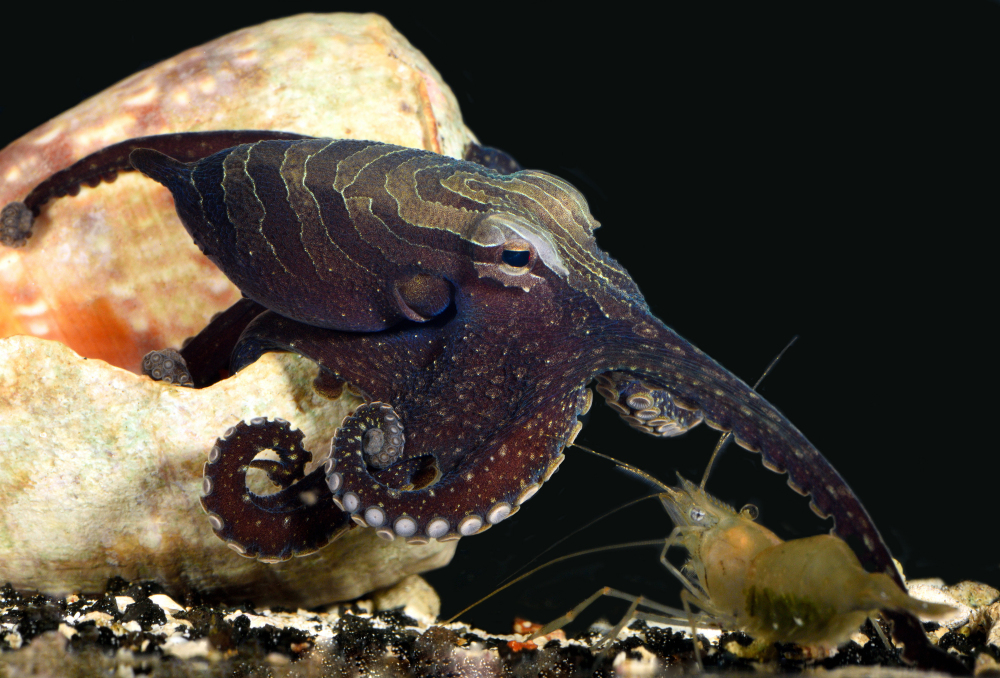WASHINGTON — The octopus already is an oddball of the ocean. Now biologists have rediscovered a species of that eight-arm sea creature that’s even stranger and shares some of our social and mating habits.
With their shifting shapes, mesmerizing eyes and uncanny intelligence, octopuses “are one of the most mysterious and captivating species,” said Rich Ross, a biologist at the California Academy of Sciences. “They’re aliens alive on our planet and it feels like they have plans.”
For Ross and colleagues, it got stranger when they got a batch of octopuses from Central America to study.
While most octopuses live alone, coming together for ever-so-brief and dangerous mating, couples of this species can live together to mate for a few days in the same cramped den or shell.
While other male octopuses mate from a distance to avoid being cannibalized, these octopuses mate entangled beak-to-beak. That style could almost be thought of as romantic, said Alvaro Roura, an octopus expert in Australia.
While other females lay one batch of eggs and then die, the female of this species lives longer and produces eggs constantly, Ross said.
But it’s more than sex. These octopuses clean food waste from their dens. They twirl their arms like an old-timey movie villain with a moustache. And they learn that people mean food: when someone enters the room, they head to the top of the tank.
“It’s the most amazing octopus that I’ve ever gotten to work with,” Ross said.
The octopus, normally a dull chocolate brown, suddenly sports stripes and spots when it gets excited or upset, said Roy Caldwell of the University of California, Berkeley. He is the lead author of a paper on the octopus with Ross and others published Wednesday in the journal PLOS One.
The species is preliminarily called the Larger Pacific Striped Octopus, although it’s really not much bigger than a tennis ball.
It was found 40 years ago off Panama. Other scientists wouldn’t believe it was a separate species so its discoverer, Arcadio Rodaniche, gave up and the species was never named.
Then in 2011, Caldwell got an email from a high school student about his pet octopus, Charlie. It was the same species discovered in the 1970s. Caldwell traced it to a dealer who sent him two dozen of the species from Panama, Nicaragua and Mexico. The researchers note that this octopus species could act differently in the wild.
They included Rodaniche as a co-author after the retired researcher declined to let them name the species after him.
Send questions/comments to the editors.



Success. Please wait for the page to reload. If the page does not reload within 5 seconds, please refresh the page.
Enter your email and password to access comments.
Hi, to comment on stories you must . This profile is in addition to your subscription and website login.
Already have a commenting profile? .
Invalid username/password.
Please check your email to confirm and complete your registration.
Only subscribers are eligible to post comments. Please subscribe or login first for digital access. Here’s why.
Use the form below to reset your password. When you've submitted your account email, we will send an email with a reset code.